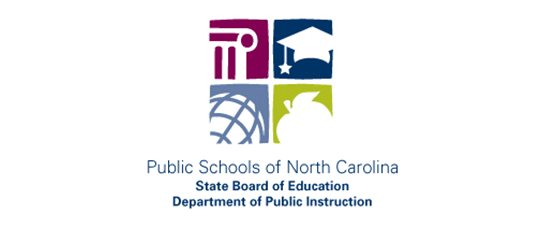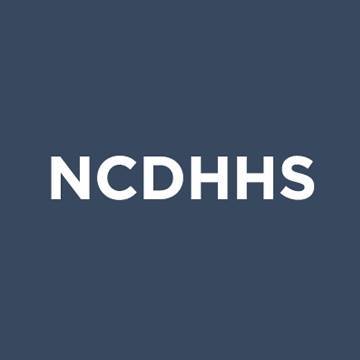
Last Updated on October 24, 2022 10:09 am
North Carolina’s performance on the National Assessment of Educational Progress given during the 2021-22 school year to fourth and eighth graders generally mirrored a national decline in reading and math skills as schools everywhere were beginning to recover ground lost to the disruptions of the COVID-19 pandemic.
The results for North Carolina are the latest evidence of significant learning loss during the protracted pandemic, which forced schools to transition to remote instruction beginning in March 2020, with many schools across the state suspending in-person classroom learning through much of the 2020-21 school year.
While the state’s average scores declined from the last NAEP in 2019 among both fourth and eighth graders and in math and reading, the percentage of fourth graders achieving a score of at least “proficient” in reading was similar to the 2019 assessment as were several student groups, including black, Hispanic, white, economically disadvantaged students, students with disabilities, and English learners.
“These findings reflect what our Office of Learning Recovery identified in March of this year regarding the effects of lost instructional time and reaffirms our commitment to working towards recovery and acceleration statewide,” State Superintendent of Public Instruction Catherine Truitt said.
“We have made strategic investments to try to address these concerns, including providing professional development for 44,000 elementary school educators in the science of reading. We’ve also identified targeted interventions to address learning loss specific to transitioning students – those moving from elementary to middle school or middle to high school.
“We are confident in the partnerships we’ve developed with local district leaders to help them provide targeted interventions to students who need them the most. We have been saying that recovery will take time, and we believe we are on the right track. We are confident that we will see the fruits of our labor in future students’ performance on NAEP.”
NAEP, also known as the Nation’s Report Card, is conducted by the National Center for Education Statistics to measure math and reading performance of a representative sample of students in the fourth and eighth grades in each state and the jurisdictions of the District of Columbia, U.S. Department of Defense schools and Puerto Rico (math only). The assessment is typically administered every two years, but it was delayed from 2021 to winter 2022 because of the pandemic.
NAEP summary results are reported in terms of average scale scores and four performance levels – below basic, basic, proficient and advanced. The NAEP proficiency levels are set at a very rigorous level, and the proficient level is defined as mastery over challenging subject matter. NAEP’s proficient standard is roughly equivalent to North Carolina’s standard for Career and College Readiness used in measuring student performance on the state’s end-of-grade and end-of-course exams.
North Carolina was among 30 states/jurisdictions that saw statistically significant declines in average reading scores at the fourth grade from 2019 to 2022 and among 33 states/jurisdictions with declines in eighth grade reading scores. No gains were made by any state/jurisdiction in reading at the fourth grade, and only Department of Defense schools made a gain in their eighth-grade reading score.
North Carolina was one of 43 states/jurisdictions that also lost ground on their fourth-grade math scores and one of 51 states/jurisdictions with declines in eighth grade math scores. No state/jurisdiction showed a gain in math in either fourth or eighth grade.
A long-term trends assessment by NAEP of a national sample of 9-year-old students in 2022 issued last month found that their performance in reading and math had slipped significantly from 2020. A state report issued in March analyzing the performance of North Carolina students during the 2020-21 school year found that learning progress slowed across all grades and subjects. The report from the N.C. Department of Public Instruction’s Office of Learning Recovery and Acceleration showed that students made less progress, on average, than students in the same grades and courses in previous years and that in some grades and subjects – particularly in math – students would need more than a year of additional learning time to catch up.
North Carolina’s results were also consistent with the nation as a whole. North Carolina’s average reading score for fourth graders declined five points from 2019 to 216, the same average score for the nation, which fell three points. The average reading score for the state’s eighth graders fell seven points from 2019 to 256, not significantly different from the nation’s score of 259.
In math, the average score for fourth graders in the state dropped five points from 2019 to a score of 236, a decline similar to that of the national average, which fell to 235. The average math score for the state’s eighth graders dropped 10 points from 2019 to 274, while the national average fell eight points to 273.
North Carolina’s results overall slipped to levels not measured as long ago as seven years, and in some cases, more than 20 years. Average reading scores in both fourth and eighth grades were not significantly different than those measured in 2007. In terms of percentages of students scoring at least proficient in reading, the results for fourth graders were about the same as in 2013; for eighth graders in reading, 2015.
In math, the average score for fourth and eighth graders hasn’t been as low since 2000; with percentages of fourth graders with scores of proficient or better not statistically different than 2005, for eighth graders, 2000.
The percentages of North Carolina students scoring “below basic” achievement levels in reading increased in 2022, reaching 39 percent of fourth graders, a 15-year high; among eighth graders, 34 percent were below the basic achievement level in reading, a proportion not exceeded since 2005.
A similar trend was measured in math, with 25 percent of fourth graders below basic in math, the most since 2000, and 39 percent of eighth graders had the greatest percentage scoring below basic since 1996.
Compared to other states/jurisdictions, North Carolina’s average scores and achievement levels in 2022 were statistically similar to most:
4th Grade Reading
The state’s average reading score for fourth graders was within a range similar to that of 36 states/jurisdictions, lower than that of eight states/ jurisdictions and higher than seven states/jurisdictions. North Carolina’s percentage of fourth graders at or above the proficient level was similar to that of 41 states/jurisdictions, lower than four states/jurisdictions and higher than six states/jurisdictions.
8th Grade Reading
The state’s average reading score for eighth graders was within a range similar to that of 30 states/jurisdictions, lower than that of 17 states/jurisdictions and higher than four states/jurisdictions. North Carolina’s percentage of eighth graders at or above the proficient level was similar to that of 32 states/jurisdictions, lower than 18 states/ jurisdictions, and higher than one state/jurisdiction.
4th Grade Math
In math, the state’s average score for fourth graders was within a range similar to that of 29 states/jurisdictions, lower than that of eight states/jurisdictions, and higher than 15 states/ jurisdictions. North Carolina’s percentage of fourth graders at or above the proficient level was similar to that of 33 states/jurisdictions, lower than six states/jurisdictions and higher than 13 states/jurisdictions.
8th Grade Math
The state’s average math score for eighth graders was within a range similar to that of 20 states/jurisdictions, lower than that of 15 states/jurisdictions, and higher than 17 states/ jurisdictions. North Carolina’s percentage of eighth graders at or above the proficient level was similar to that of 29 states/jurisdictions, lower than 12 states/jurisdictions and higher than 11 states/jurisdictions.
For more detailed North Carolina results, follow links below:
2022 NAEP NC Fourth Grade Reading
2022 NAEP NC Fourth Grade Math
2022 NAEP NC Eighth Grade Reading
2022 NAEP NC Eighth Grade Math
Go here for the national NAEP website.



















